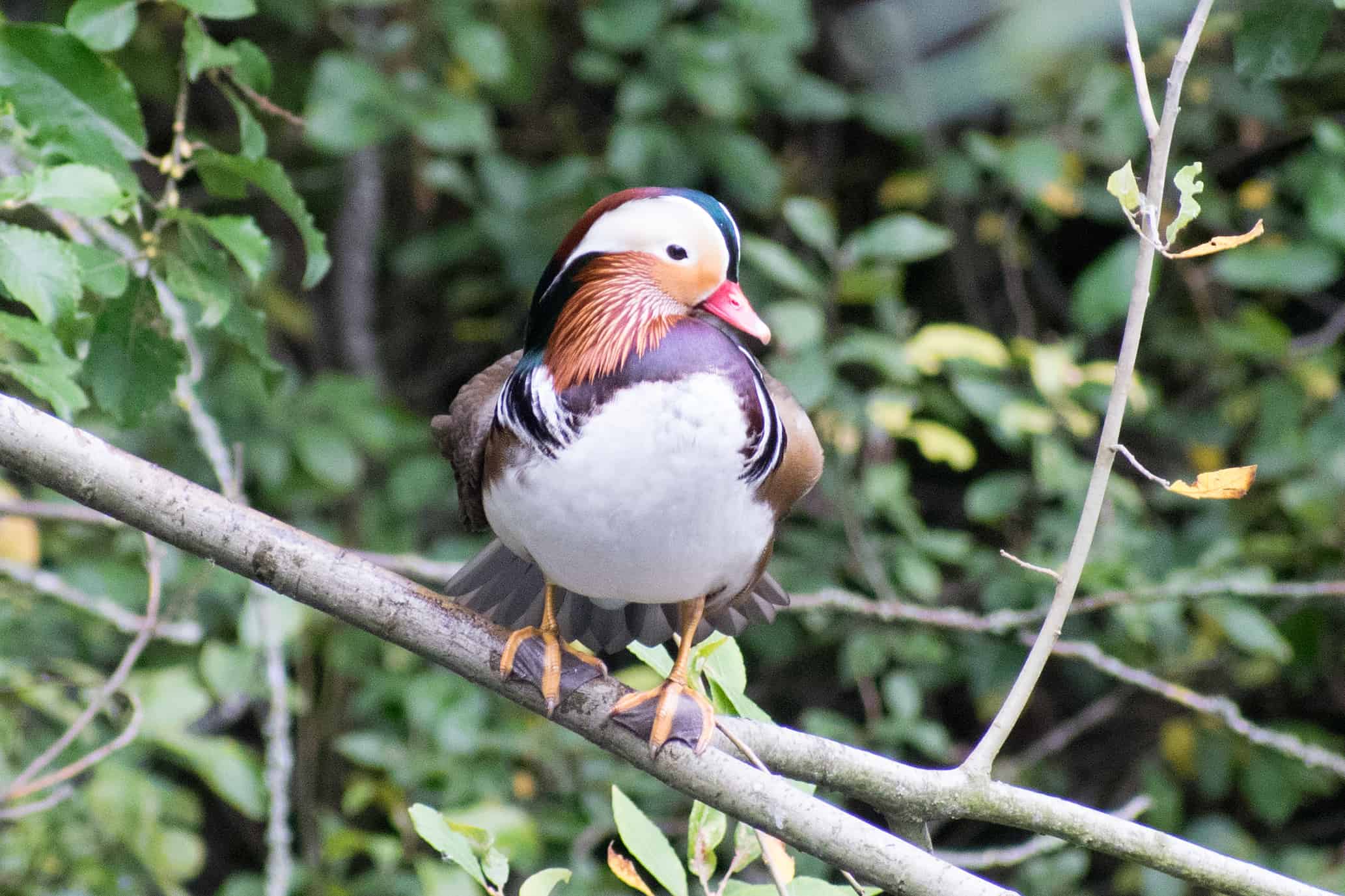wildlife
Efforts have been made over the years to maintain habitats for our native wildlife, which are attracted by the woods, bogs, meadows and the ponds. You can find out more about the birds at the birdwatching walks organised by the Heath and Hampstead Society.
If you'd like to support the conservation of Hampstead Heath's hedgehog, grass snake, stag beetle, bat and bird populations, you can now sponsor homes for your favourite species. Find out more here.
Birds
There are reported to be over 180 bird species on the Heath and I can’t list them all, but this is when and where you can find some of our most-loved feathered friends.
Summer visitors: grebe, heron, wagtail, swallow, swift, martin, chiffchaff, willow warbler, spotted flycatcher, blackcap, turtle dove.
Autumn visitors: whinchat, wheatear.
Winter visitors: redwing, fieldfare, siskins, redpoll.
Water birds: moorhen, black-headed gull, coot, tufted duck, great crested grebe, pochard, mallard, swan, mandarin duck (pictured).
Waterside birds: wagtail, woodcock, kingfisher, Canadian goose, Egyption goose, heron, snipe.
Open heath: blackbird, carrion crow, fieldfare, goldfinch, house martin, house sparrow, kestrel, linnet, magpie, meadow pipit, redwing, skylark, song thrush, mistle thrush, sparrow hawk, swallow, swift, starling, tern, whinchat, wheatear.
Woodland: blue tit, blackcap, bullfinch, chiffchaff, coal tit, chaffinch, dunnock, goldcrest, great tit, greenfinch, goldcrest, jackdaw, jay, long-tailed tit, nuthatch, parakeet, pigeon, redwing, rook, redpoll, robin, siskin, spotted flycatcher, tree creeper, tree sparrow, tawny owl, wren, willow warbler, greater spotted woodpecker, wood pigeon.
Insects & Other wildlife
You can find many species of butterfly, such as the Peacock, Purple Hairstreak, and the Small Tortoiseshell. We also have a rare solitary species of bee called the Mining Bee.
There are at least four species of bat on the Heath: the noctule bat, one of the largest bat species; its smaller cousin Daubenton’s bat; the protected Natterer’s bat; and the tiny Common Pipistrelle bat, which is known for its distinctive habit of flying above lakes and ponds to feed on flies and midges.
Foxes have been seen across the Heath, along with rabbits, hedgehogs, slow worms, squirrels, and frogs. There are several breeding pairs of (entirely harmless!) grass snakes, and the occasional terrapin.
Muntjac deer, the smallest British deer, are occasionally seen around the East Heath area, though they’re nocturnal, solitary and hard to spot.

